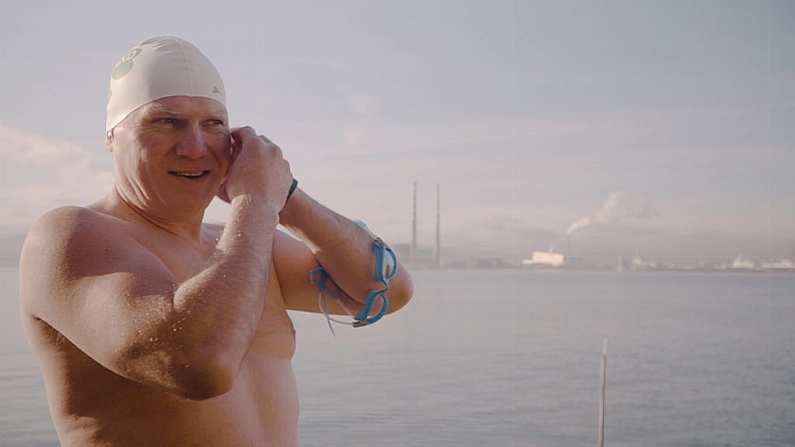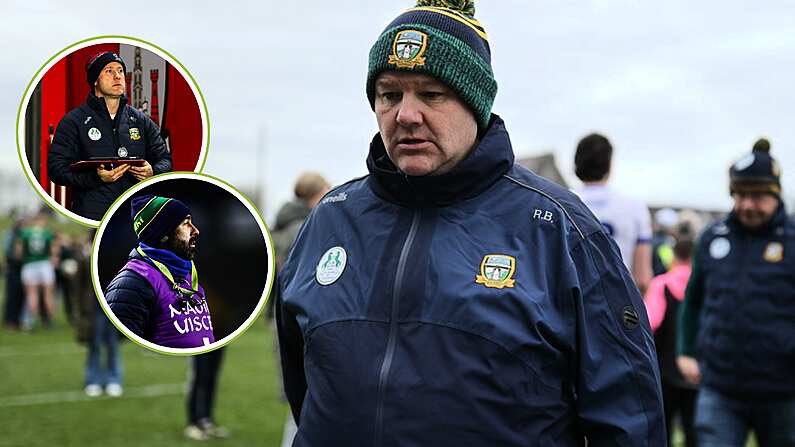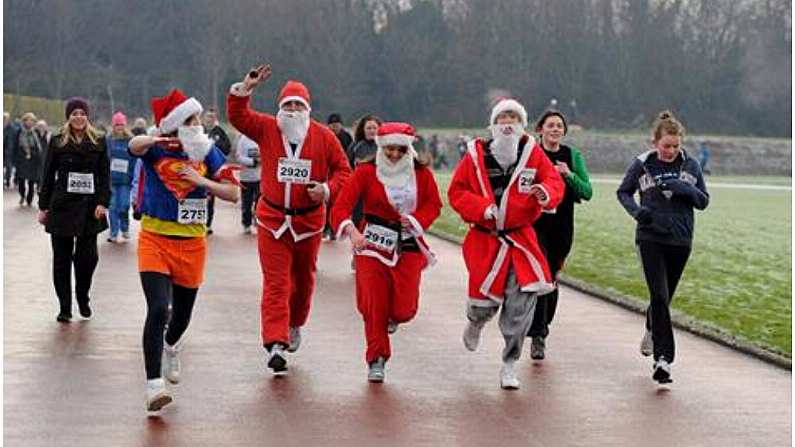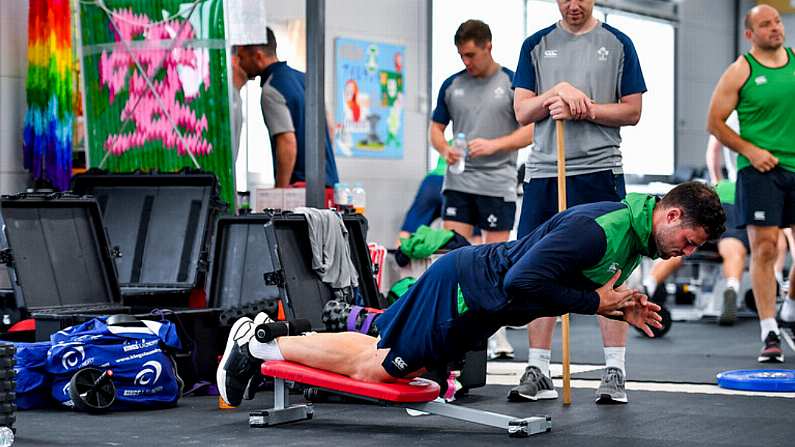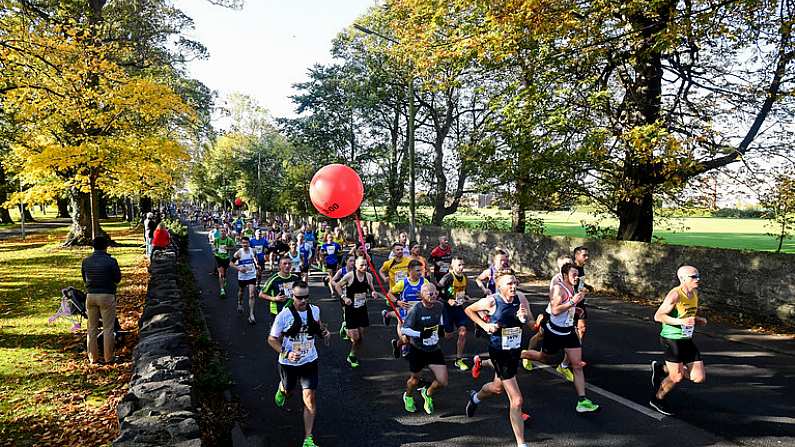A jellyfish sting? Ger Carty compares the painful sensation to a bee sting before correcting himself. "I'd say it's probably more like a bad nettle sting, that's how I'd describe it."
He should know because when he climbed out of the sea at Sangatte, in 2011, hauling himself up onto the unwelcoming, rocky coastline of northern France, almost 19 hours after leaving England, his body was covered in them.
"It was mainly on the legs and upper torso that the jellyfish got me," he recalled, matter of factly.
Truth be told, after swimming for 18 hours and 52 minutes, through night and day, through shipping lanes, through body battering currents and in dangerously cold temperatures, the impressions left on his ravaged body by Compass jellyfish while crossing the English Channel were the least of his concerns.
"I was in a desperate state, my face and body had puffed up through stress, I looked about 70, my tongue was swollen, my eyes were swollen, my face was swollen, it was sheer stress, people didn't recognise me," recalled Carty who, on the 16th of September, 2011, swam 68 miles in total, from one country to another.
I was looking to do it in 10 and a half hours, I ended up just shy of 19 hours. As the crow flies it's a 23-mile crossing but I ended up swimming around 100km, 68 miles, it's all mapped and on record. A daunting part was swimming in the dark. I spent nine hours in the dark. There was a boat accompanying me but it wasn't like it was two or three feet away, it had to keep 100 or 200 metres away because of the swell and fumes.
So you're on your own, looking ahead into a black abyss. You look down at times and you see giant shapes moving in the water beneath you. I saw an awful lot of cruise ships too, I could actually hear the music coming from some of them. They looked ginormous. It was like lying down on your back and looking up at the Ballymun Towers. I was in one of the busiest shipping lanes in the world and you do get scared that one of them mightn't see you and might run over you.
Young Gerard Carty began swimming when he was at Scoil Mhuire National School in Marino. He tried athletics. "I was brutal", he shrugged. He tried Gaelic football. "I hadn't got the aptitude or the co-ordination for that," he concluded. So he tried swimming.
"The thing is, I've a relatively long torso and short legs," he said. "Even though I'm six-foot, that's the way my body is built and it's a good composition for a swimmer. I started taking part in galas with the school, competing against other schools, and it went from there really."
Carty won the Dun Laoghaire Harbour swim in 2004 and that same year set Irish records at 800m and 1,500m while swimming in Glasgow.
Four years later, and 39 years of age, he set out with around 20 other hardened sea swimmers from Rathlin Island, off the coast of Antrim in Northern Ireland, and pointed his body towards Ballycastle and the mainland, 14kms away. Only five completed that race in August of 2008 and Carty came first in a time of three hours and four minutes.
"That was kind of the platform for me when I was told, 'You've got to swim the English channel'," he recalled. If only they knew what they were asking of him.
His prep for the channel crossing, just over three years later in 2011, was flawless, even sleeping with just a thin sheet on his bed for a year beforehand to get his body used to prolonged periods of intense cold. He satisfied all the criteria and competency tests laid on by the Channel Swimming Association and paid the EUR3,500 or so for a manned boat to accompany him across. His initial plan was to enter the water around September 5th but Hurricane Katia whipped through that schedule. On the 16th, he returned and toed water on the southern coastline of England under a full moon and on a spring tide.
Around 4am, eight or nine hours in, he could sense his body clock ticking towards sleep. Then he tore a rotator cuff muscle in his left shoulder. For a while, he swam using only his right arm. The closer he got to France, and the warmer the water became, he found it possible to swim with both arms again.
"The cold took my mind off the pain," he said.
"It's like an ultra marathon, or someone running for hours and hours, it's 90 or 95 per cent mental. Everybody gets their demons, they start knocking on your door saying, 'You're too tired. You can't keep going. You're sore'. Your mind is making every excuse to quit or give up. I tried to think of my mind as a blackboard when those thoughts would enter, I'd pick up the duster and just wipe out the negative thoughts. That's what I did."
Aside from ambition, obsession and at times sheer belligerence and stubbornness, what helped propel Carty through those choppy waters and beyond his demons was the real inspiration behind the gargantuan feat he was attempting.
"I was swimming on behalf of my colleague, Paula Mulvaney, who was battling cancer at the time," said Carty.
"Channel swimmers don't normally do it for charity or for a cause because 90 per cent don't make it across. Nobody wants to hear about you failing so that was keeping me going, not to give up."
Carty is a Senior Sports Development Officer/Water Safety Development Officer with Dublin City Council. He still swims competitively and is a regular in the Leinster Open Sea races though initially after the channel swim, he fell out of love with swimming.
"I suffered from PTSD (post traumatic stress disorder) after it," he admitted. "It was a very difficult crossing, the week after a bad storm, swimming through slop at times. I was way out of my comfort zone. I get the odd flashback even now; getting your feeds every 45 minutes, only stopping for 15 seconds to take them or you'll be pushed away off course, trying to lie on your back and co-ordinate yourself to pee."
Three kilometres from the shore, Carty remembers finally spotting France. Yet despite fresh adrenaline coursing through his veins, he couldn't make that last surge forward. "The boatman advised me not to go for it, the tide was against us and he reckoned it could pull me away and we'd miss our landing spot altogether so he took me parallel to the shore for what seemed like an hour, I got very frustrated," he recalled.
So what was the feeling when it was all done, euphoria or relief?
"I was exhausted," revealed Carty. "I remember looking at the rocks, wondering after 19 hours lying in the water if I could even stand up on them. 'Would I fall and break my ankle on the rocks?'
"It took me a year really afterwards, I didn't swim for a year, maybe 14 or 15 months. I was fed up of it, lost the grá for it. I know people who have failed the channel swim and given up swimming entirely. I didn't want to be one of those people and I'm grateful to a friend of mine who told me, 'Look, you have to get back in the water'. Even just for exercise and keeping healthy, and my boys were only young at the time, I knew I had to do it. It was the best decision I made to get back in."
Carty's day job involves him overseeing three swimming pools in Dublin: Crumlin, Sean McDermott St and Coolock. You might never swim the channel like he did but if you can't swim, no matter what age you are, he is adamant that you can learn, and quickly, and that you can soon become competent in the water. All beginners are welcome at the pools with programmes available to suit all ages.
"We have adults, senior citizens, kids, anyone can learn to swim, age isn't an issue," said Carty. "You'd generally learn to swim to a basic level within six lessons. It could save your life. It could be the difference some day.
"I have family members myself who can't swim and I'd always say, 'Even if you're going on a sun holiday somewhere, aren't you better off being able to enjoy the pool or the sea?' For me, swimming is a must and everyone is welcome to learn."
For any readers who want to sign up for swimming they can find more information here - https://www.dublincity.ie/sportsandfitness

